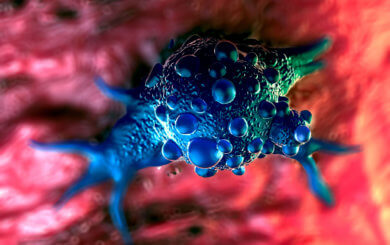
Researchers in the UK and the United States have succeeded in ‘fine tuning’ a new thermoplastic biomaterial to enable both the rate at which it degrades in the body and its mechanical properties to be controlled independently.
The material, a type of polyester, has been designed for use in soft tissue repair or flexible bioelectronics by a team at the University of Birmingham in the UK and Duke University in the US.
Materials that successfully replicate the necessary elasticity and strength of biological tissues but which also biodegrade over an appropriate timescale are extremely difficult to engineer. This is because the chemistry used to produce a material’s mechanical properties will also typically govern the rate at which it degrades.
In a new advance, the team has now shown how the addition of succinic acid – a product found naturally within the body – can be used to control the degradation rate.
In a new study, published in Nature Communications, researchers showed how the polyester biomaterial degrades gradually over a period of four months, with healthy tissues growing into and eventually replacing the implant. Tests in rats were also carried out to confirm the material’s biocompatibility and safety.
By varying the amounts of succinic acid the team could control the rate at which water penetrates the material and hence the degradation speed. Usually, the structural changes that increase degradation speed would cause a loss of strength, but this material has been designed with specific stereochemistry that mimics natural rubber and allow its mechanical properties to be finely controlled. This means any loss of strength can be compensated for by making suitable stereochemical adjustments. This is a significant advance that has so far not been achieved in any other degradable biomaterial.
Co-author of the study Professor Andrew Dove explains:
“Biological tissues are complex with varying elastic properties. Efforts to produce synthetic replacements that have the right physical characteristics and that can also degrade in the body have been ongoing for decades. Part of the challenge is that a ‘one-size-fits-all’ approach doesn’t work. Our research opens up the possibility of engineering biological implants with properties that can be fine-tuned for each specific application.”
Professor Matthew Becker, who holds dual appointments in chemistry and mechanical engineering and materials science at Duke, notes that the biomaterials and regenerative medicine communities have been severely limited to a few materials which lack the diversity of properties reported in this study. “The materials we have developed offer a real advance in the ongoing search for new biomaterials. The tunable nature of the material makes it suitable for a range of different applications, from replacement bone to vascular stents to wearable electronics. Additional work to prove the biocompatibility of the material and its use in more advanced demonstration is ongoing.”
The research was funded by the National Science Foundation, the John S. and James L. Knight Foundation, the European Research Foundation and the National Health and Medical Research Council of Australia.
The technology is the subject of international patent applications filed by the University of Warwick and Akron University.
News & Analysis






